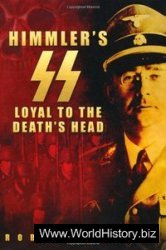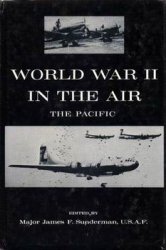During this era, educated individuals and professionally trained writers, artists, and
composers developed new and distinctive types of cultural products, but they also
continued to share many traditions with their less-educated neighbors. The percentage
of the population that could read and write increased slowly from 1450 to 1750,
and was highest among urban upper- and middle-class men in northwestern Europe.
Universities offered the most advanced education, and increasingly adopted humanist
curricula that emphasized original texts. Humanists asserted that educated men
should be active in political life, and several humanists wrote important works of
political theory addressing key issues of the day, including how rulers should govern,
whether women should rule, and when subjects had the right to resist an unjust
monarch. Italian humanists grew interested in Greek philosophy, especially that of
Plato, while northern humanists such as Erasmus regarded humanism as a way to
bring about needed reforms in the Christian church. The increase in literacy provided
a market for all types of printed books in vernacular languages, and theatres staged
the works of playwrights for a variety of audiences. People told stories to one another
while they worked or in the evenings, and sang ballads or played musical instruments.
Professional musicians entertained at court and played and sang in major churches,
often in multi-part harmony.
160 early modern europe, 1450–1789
The word “Renaissance” was fi rst used by authors writing about art in the sixteenth
century, who began to see painters, sculptors, and archictects as creative geniuses rather
than simply artisans. Artists, especially in Italy, developed an innovative style in which
they tried to achieve a sense of balance, proportion, and harmony in their buildings,
depictions of the human form, and portrayal of the natural world. Artists studied for
many years perfecting their craft, and the few female painters who became known were
almost all the daughters of painters. Artistic works were generally created for individual
or group patrons, who often provided specifi c guidelines for what they wanted
in a portrait, a statue, or even a building.
As we will see in the next chapter, religious reformers in the sixteenth century had
strong opinions on nearly every aspect of Renaissance culture – education, humanism,
political theory, vernacular literature, art, and music. Religious and secular authorities
throughout Europe saw threats to public order and propriety everywhere, and thought
that God would not look favorably on cities or communities where people did not live
a moral or upright life. Their opinions shaped every aspect of culture, and much more,
in a Europe increasingly divided over religious issues.
QUESTIONS
1 How were opportunities for formal
schooling and artistic training shaped by
social class and gender in early modern
Europe?
2 What did people see as the purpose
of education in this era? What skills
and values were students supposed to
acquire?
3 Political theory in any era often refl ects
actual political developments, but is
also concerned with ideals. How is
this balance between the real and the
ideal refl ected in the political ideas of
Machiavelli and Jean Bodin?
4 How did humanism change in the
fi fteenth and early sixteenth century,
both in Italy and as it spread beyond
Italy?
5 How did playwrights and other authors
who wrote in vernacular languages
make their works appealing to audiences
and readers? Why are some of these
works, such as Don Quixote or the plays
of Shakespeare, still appealing today?
6 What were the most important stylistic
features of Renaissance painting, sculpture,
and architecture? How did these relate
to humanist ideas, and how were they
shaped by the wishes of patrons?
7 Some scholars argue that the distinction
between “high” culture and “popular”
culture that was reinforced by the
Renaissance ended in the twentieth
century. Do you agree? Are certain forms
of music, art, or other cultural products
still taken less seriously than others?
FURTHER READING
Charles G. Nauert, Jr. , Humanism and the Culture of Renaissance Europe, 2nd edn
(Cambridge: Cambridge University Press , 2006), provides a thorough introduction, as do
the many works of Paul Oskar Kristeller , such as Renaissance Thought and its Sources
(New York : Columbia University Press , 1979). Jack Goody , Renaissances: The One or the
Many? ( New York : Cambridge University Press , 2010), compares episodes of cultural
fl owering outside of Europe to the Renaissance.
Discussions of basic education include R. A. Houston, Literacy in Early Modern England:
Culture and Education 1500–1800 ( London: Longman, 1988; 2nd edn, 2001); George
Huppert, Public Schools in Renaissance France ( Urbana: University of Illinois Press , 1984); Paul
Grendler , Schooling in Renaissance Italy: Literacy and Learning 1300–1600 ( Baltimore : Johns
Hopkins University Press , 1989). For more advanced education, see Anthony Grafton and Lisa
Jardine , From Humanism to the Humanities: Education and the Liberal Arts in Fifteenth and
Sixteenth-Century Europe ( Cambridge, MA : Harvard University Press , 1986).
Charles Trinkaus , “In Our Image and Likeness”: Humanity and Divinity in Italian Humanist
Thought ( South Bend, IN : University of Notre Dame Press , 1995), examines humanists’
views on human nature. For single humanists, see Peter Ackroyd , The Life of Thomas More
(New York and London : Nan A. Talese , 1998); James Tracy , Erasmus of the Low Countries
(Berkeley: University of California Press , 1996). On political thought, see Quentin Skinner , The
Foundations of Modern Political Thought ( Cambridge: Cambridge University Press , 1978);
Gordon Schochet, Patriarchalism in Political Thought ( New York : Basic Books , 1975).
Stephen Greenblatt , Will in the World: How Shakespeare became Shakespeare ( New
York : Norton, 2004), interweaves what we know about the life of the playwright with a
broader analysis of Elizabethan culture, while Jean Howard , The Stage and Social Struggle in
Early Modern England ( London: Routledge, 1994), and Stephen Orgel, Impersonations: The
Performance of Gender in Shakespeare’s England ( Cambridge: Cambridge University Press ,
1996), also set English theatre in the context of broader social issues.
Richard A. Goldthwaite, Wealth and the Demand for Art in Italy, 1300–1600 ( London and
Baltimore : Johns Hopkins University Press , 1993), analyzes the economic context of Renaissance
art, while Peter Burke, The Italian Renaissance: Culture and Society in Europe ( Princeton: Princeton
University Press , 1986), discusses the social setting, and Lauro Martines, Power and Imagination:
City-States in Renaissance Italy ( New York : Vintage Books , 1980), examines the political
background. Craig Harbison, The Mirror of the Artist: Northern Renaissance Art in its Historical
Context ( Upper Saddle River, NJ : Prentice-Hall , 1995), provides a good overview of northern
European developments, while Suraiya Faroqhi , Subjects of the Sultan: Culture and Everyday Life
in the Ottoman Empire ( London: I. B. Tauris , 2000), examines art, literature, and popular culture.
Allan W. Atlas, Renaissance Music: Music in Western Europe, 1400–1600 ( New York : Norton,
1998), provides an excellent introduction to the topic. Charles Nicholl, Leonardo: Flights of the
Mind ( New York : Viking , 2004), provides a broad rendering of Leonardo’s life and times.
For more suggestions and links see the companion website www.cambridge.org/wiesnerhanks .
NOTES
1 Giorgio Vasari , Lives of the Artists, trans. George Bull ( Harmondsworth: Penguin Books , 1965),
p. 205.
2 Ibid., p. 253.
3 Niccolò Machiavelli, The Prince, trans. Leo Paul S. de Alvarez ( Prospect Heights, IL : Waveland
Press , 1980), p. 101.
4 Ibid., p. 149.
5 The Political Works of James I, ed. Charles Howard McIlwain (New York: Russell and
Russell, 1965), pp. 272, 307.




 World History
World History









